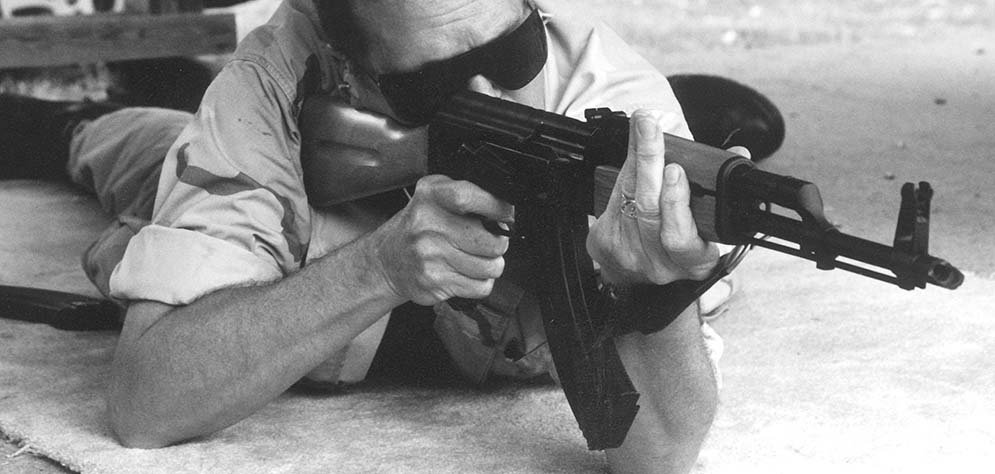By Charles Cutshaw
I first became aware of the Kalashnikov assault rifle along about 1966, when I was a young US Army Infantry officer, about ready to go to the “Promised Land,” AKA Vietnam. In those benighted days, we didn’t know much about the AK. The differences between the original AK-47 and its variants, including the AKM and “clones” produced by a number of Soviet surrogates were largely unknown to those of us in the military. For us, the AK was merely the infantry rifle of the enemy. I didn’t know or care much about how it differed from our standard infantry rifle, at the time the M-14.
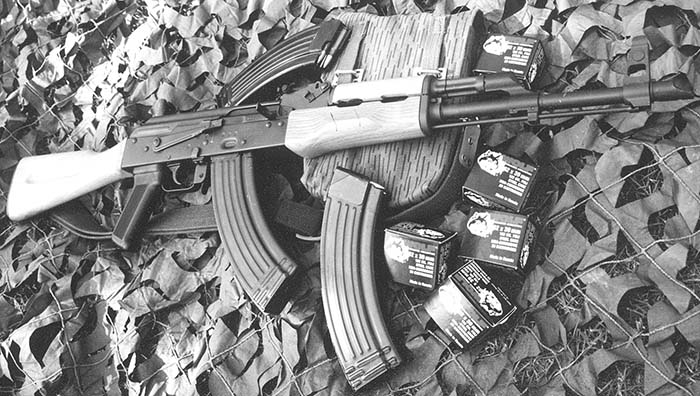
By the time I finally arrived in Vietnam in 1969, I couldn’t have cared less about the nuances of the AK versus the M16A1 with which we were equipped by then, although by that time the stories of the M16’s problems were common knowledge. It was also common knowledge that the enemy’s rifle worked, no matter what. Upon my arrival at HQ, MACV in Saigon, the assignments officer looked over my paperwork and informed me that I was going “up country” to II Corps to MACV Advisory Team 8 as an advisor to the Vietnamese Army. I passed through the standard MACV advisor process, and after gathering all my field gear, the final issue was my rifle, an M16A1. As the armorer handed me the rifle across the table with the receipt for me to sign, he said, “Don’t bet the farm on this thing, “Dai Uy,” Vietnamese for captain, my rank at the time. In short order after my arrival at my advisory team, I was able to obtain a “Swedish K” (Carl Gustav) 9mm SMG as my primary armament along with a World War II Remington M1911A1 as a side arm. I subsequently obtained an M79 40mm grenade launcher as a backup for personal fire support when things went really bad. I never fired a shot in the M16A1 that was issued to me upon my arrival in Vietnam. It sat unfired in a wall locker in my “hooch” until I turned it in when I processed out of Saigon a year after my arrival. I soon came to appreciate the AK, however.
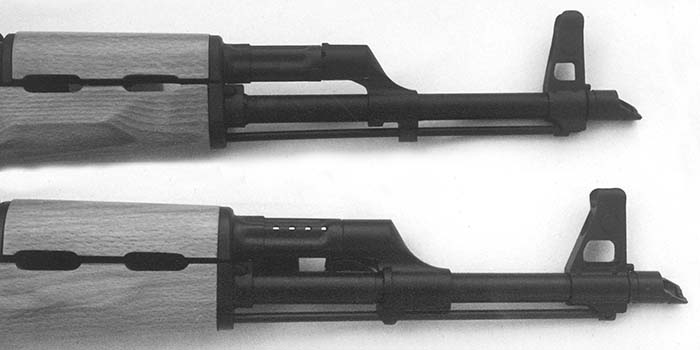
During my tour, I captured several AKs, almost all Chinese Type 56-1 with the folding bayonet. I took one of the best as my personal “toy” and kept it throughout my tour in Vietnam. I had the rifle for about nine months and shot it during infrequent periods of free time when I had nothing else to entertain myself other than get drunk. The rifle’s finish was rough, but kept the exterior more or less free from rust. The furniture was rough plywood finished with varnish of some sort that looked as if it had been applied with a broom. I never once cleaned that rifle. In the humidity of Vietnam and the salt air of the coast, it quickly rusted in a major way! The operating rod rusted solid into the gas tube within a few days after having been fired. I had to kick the charging handle with my boot to free it every time I wanted to shoot the rifle. Yet, once I’d done that, the rifle worked every time! (No – I didn’t store the AK with a round in the chamber!) Also, it was always capable of hitting a man-sized target at 100 yards. It never failed to function and was always “minute of human” accurate. That rifle just wouldn’t quit! There was no comparison between its reliability and that of our M16A1 that required intensive maintenance to keep it running. The AK rifle made a deep and lasting impression on me, but once I left Vietnam, I didn’t have another close encounter with an AK rifle until semiautomatic versions began to arrive in the USA. In the 1980s, semiautomatic AK clones began arriving in the United States, but most eventually fell victim to bans and imports and were later altered with stupid looking “thumbhole stocks” to meet equally stupid BATF regulations. Some importers began adding sufficient US made components to provide rifles with the pistol grip configuration, but almost all imports were made up of used parts in various states of wear. Most of these commercial AKs were pretty much like the Vietnam era Type 56 that I had so many years ago – rough but serviceable. Some of the Chinese guns were better, but they were only imported for a short time before being banned. Accuracy? Not very good, but certainly capable of hitting a human or deer sized target out to 100 yards.
That was the way of legal US AKs until recently when Arsenal USA began manufacturing AKs in Texas. These new AKs have literally introduced a new era for Kalashnikov type rifles in the United States. In a word, Arsenal USA’s AKs are NICE! In fact, they are the best finished such rifles I have ever seen. Moreover, these rifles are made up of brand new, never issued parts and are quite accurate. No, they aren’t match rifles, but the examples that we received for test both grouped 1.5 to 2 inches at 100 yards, depending upon the ammunition we used.
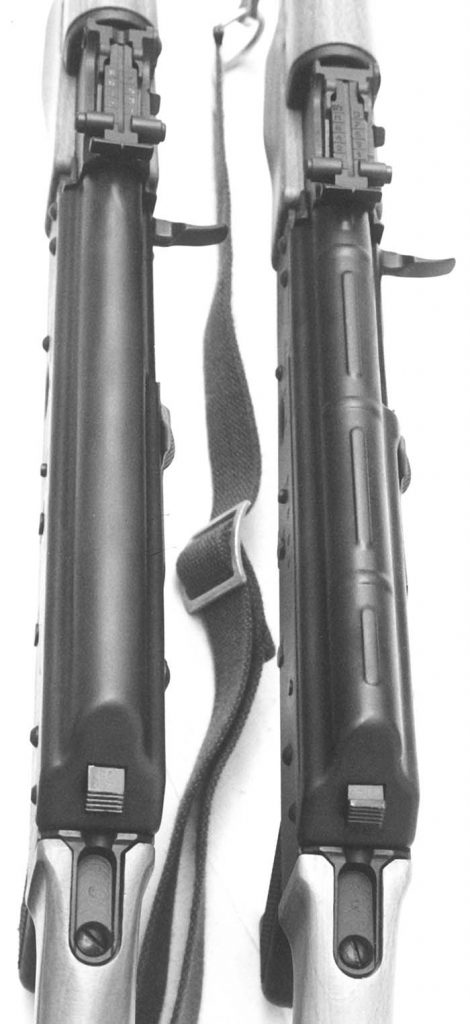
Arsenal begins with new receivers from FEG; a Hungarian firm that exported semiautomatic AKM rifles called the SA-85M until 1997. In fact, the left side of Arsenal’s receivers is so marked. Arsenal places its own markings on the right side of the receiver. These include Arsenal’s model number and serial number. Before Parkerizing, the receivers are finished, polished, cut and ground to ensure reliability and accuracy. The top rail is polished along its entire length. The ejector is trimmed to size. Both ends of the receiver are ground even with the trunnions. The magazine well is cut to size. There are several other operations that Arsenal performs on these rifles to ensure quality and accuracy, but these are the significant ones.
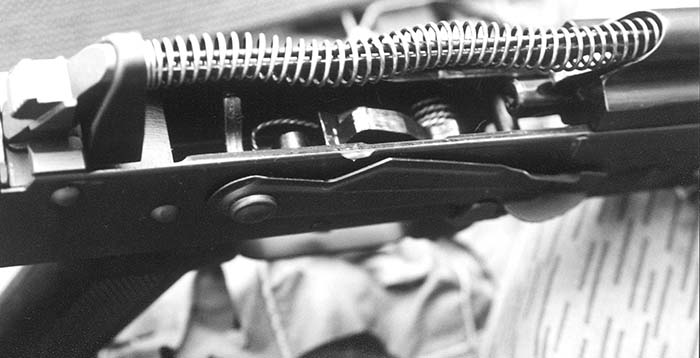
Arsenal USA also offers a close replica of the Hungarian AMD-63 version of the AKM with a forward pistol grip and sheet metal lower handguard. This rifle also uses FEG receivers and new Polish components. We did not evaluate Arsenal USA’s AMD-63 replica rifle, but it is an interesting variant of the AK family that might well be suited to shooters who wish to have something a little different than “run of the mill” AKs. Since the AMD-63 replica is identical to the others except for its handguard and forward handgrip, performance should be similar.
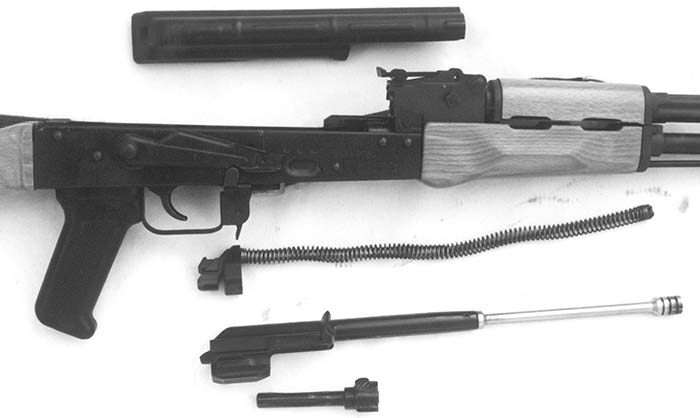
Most other major metal components of the rifles are purchased from the Polish Ministry of Defense. What is significant about these components is that they are brand new, never issued components that have been hand-removed from war reserve Polish PMKM (AK-47) and PMKMS (AKMS) rifles. These rifles were manufactured during the Cold War, test fired, then preserved and set aside in the event that the Cold War got Hot. With the demise of the Warsaw Pact and Poland’s entry into NATO, the rifles were declared surplus. As mentioned, there are two types of rifles now being manufactured by Arsenal using factory new Polish components. Both have the AKM-type “wedge” muzzle brake that helps prevent muzzle rise in full automatic fire. The brake is permanently fixed to the threaded muzzle via a 0.25 inch hole that is welded and then ground flush and polished for cosmetic appearance. Of course, the nefarious bayonet mounting studs are ground off to preclude gangland bayonet charges and “drive-by bayonet attacks” in the streets. Barrels are standard AK, but those of the PMKM were originally screwed into the receiver, rather than the AKM system of pinning the barrel in place. Arsenal USA removes the PMKM barrel threads, then turns the breech end of the barrel down to slight oversize to fit the FEG receivers. It is then pressed into place and pinned.
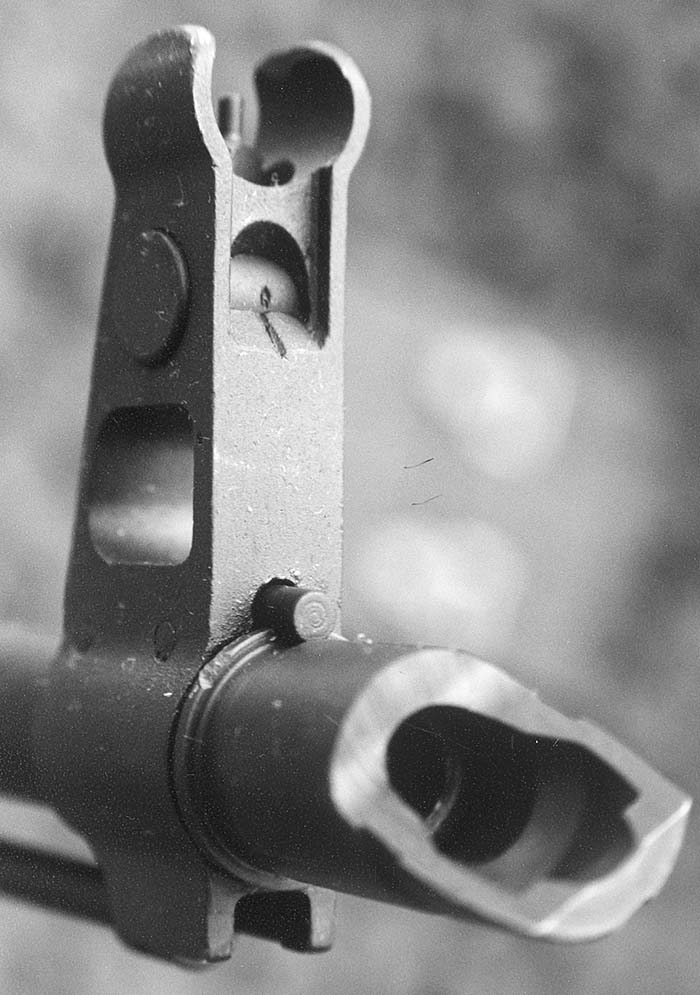
Fit and finish of these rifles must be seen to be appreciated. The metal parts are finished in a satin black phosphate of uniform color and density. The furniture, save for the pistol grip is of Hungarian elm, steamed for hardness, sanded to a fine surface finish and is a nice light tan color with an attractive grain pattern. The wood is finished with hot wax that penetrates the wood and highlights the grain. Fit of wood to metal parts is of good quality and is on a par with commercial rifles. There is an intentional 1 mm gap between the rear of the receiver and the stock, but this is present to prevent the sheet metal receiver from damaging the edges of the stock in recoil. Recoil is absorbed by a large inner wood piece that is less subject to damage. The Polish metal components are all serial numbered in the European tradition, and all numbers matched on the rifles we received for test. Of course, the receiver serial numbers did not match the other parts, as these were removed from the rifles and replaced by new FEG receivers. The required US manufactured components are the pistol grip, trigger, hammer, disconnector, gas piston and slant muzzle brake. Each rifle is also equipped with a Buffer Technologies recoil buffer as standard equipment – a nice touch. Both rifles are provided with a five round magazine, a sling, a certificate of compliance and a politically correct lock. Despite the fact that a 30 round magazine is not included, both rifles can legally accept high-capacity magazines without modification.
Each Arsenal USA rifle is sighted in to shoot point of aim at 100 meters prior to leaving the factory. Before a rifle is shipped, the final shot must be inside a 0.75 inch central circle at 25 meters. This equates to approximately 1.5 to two inches at 100 meters. If a rifle’s front sight must be moved more than 1 mm in order to meet accuracy standards, it is returned to the plant to have the front sight straightened. This does not result in a “sub minute of angle” rifle, but it must be recalled that these are essentially short barreled military carbines. In that context, their accuracy is as good as any “out of the box” military rifle at 100 meters, including the highly touted M-14 or M-1 Garand in their true military configurations.
Our sole minor complaint regarding these rifles is the standard sling. The sling that accompanies the SSR rifles we received was made of flimsy nylon with a plastic attachment snap and is so narrow that it does not properly fit the sling swivel mounted on the rifle’s buttstock. This sling and its attachment “hardware” are so flimsy that we were reluctant to use it to steady the rifle during testing. We therefore bought two robust East German surplus heavy web slings for approximately a dollar each and replaced the factory slings on both rifles. Although this complaint is a minor one, Arsenal should take notice – a good rifle deserves a decent sling. (Ed Note: Arsenal USA advises that the nylon slings have now been replaced by sturdy canvas items.)
As mentioned, Arsenal produces two SSR rifles. The first rifle is designated the SSR-85B. This rifle is made up using components dismantled from folding stock PMKMS rifles. Naturally, the folding stocks are not available here, so the new rifles are made up using fixed stocks. It should be noted that neither of these rifles is cut apart; both are dismantled by hand to avoid damage. The second rifle is designated SSR-85C. This rifle is made up using components removed from Polish PMK AK-47 type rifles. The differences between the two rifles as manufactured by Arsenal are minor, but noticeable to the trained eye. In fact, the choice between the two is purely one of aesthetics, as both SSR-85 variants are functionally identical.
The differences between the two are:
SSR85B
AKM type front sight
AKM type gas tube
AKM type dust cover
Phosphated bolt
SSR85C
AK47 type front sight
AK47 type gas tube
AK47 type dust cover
Plain bolt
We tested each rifle using Wolf Ammunition made by Tula Ammunition Plant in Russia. We conducted our test firing at 100 yards using both jacketed hollow point (JHP) and full metal jacket (FMJ) ammunition. Our three round group sizes from both rifles were approximately 1.75 inches with the hollow point ammunition and just less than two inches using the FMJ. Functioning of both rifles was flawless, regardless of the ammunition we used. We feel obliged to mention that the Tula ammunition imported by Wolf works well in these rifles, gives good accuracy, and is so inexpensive that several domestic manufacturers have all but ceased production of 7.62x39mm FMJ cartridges. The CEO of one major manufacturer told me that he was no longer producing ammo in this caliber at all because 7.62mm bullets cost him more than Wolf’s retail price for its cartridges! Like most AKs, these rifles are great fun to shoot, but their accuracy is better than we have come to expect from an AK-type rifle. After our formal testing for group sizes, we set up clay pigeons on the range berm and shot them using the Arsenal rifles. Breaking clay pigeons at 100 yards with these rifles was easy and fun because of their inherent light recoil and accuracy! They are both so accurate and ammunition so inexpensive that plinking with the rifles is within the budget of virtually everyone. Moreover, pre-ban high capacity magazines are currently plentiful and likewise inexpensive.
Handling of both rifles is about what one would expect from any AK. They are short and extremely handy. With five round magazines, they are excellent deer rifles. The length of pull is identical to all other AK-type rifles I have ever encountered – on the short side. The single stage trigger pull of both rifles was again typical Kalashnikov in that both had a LOT of take-up, but both triggers broke cleanly at four pounds with only a slight bit of overtravel. Arsenal USA informs us that the trigger of each rifle is hand fitted and that every production SSR has the same quality trigger pull as our test rifles. Disassembly and assembly is typical AK – straightforward and easy. What makes these rifles different is their high quality, coupled with value.
We make no bones about it – we like these rifles. They are accurate, fun, simple and inexpensive to purchase and to operate. Given the price of the rifles, the present availability of ammunition and high capacity magazines, we believe that Arsenal’s SSR rifles are a bargain that is hard to beat. Our only (minor) complaint is the unworthy sling, which is now being replaced.
What does the future hold? Arsenal has hired Mr. Ivan Kolev, formerly chief engineer and designer at Arsenal (Bulgaria), one of the world’s major manufacturers of Kalashnikov type small arms. Mr. Kolev holds the equivalent of a master’s degree from Tula Institute in Russia and is one of the worlds acknowledged experts in AK design. Mr. Kolev’s presence is one of the reasons that Arsenal USA’s rifles are so good – he knows the production of these rifles as nobody in this country possibly can! Mr. Kolev also used his connections in Bulgaria to acquire production tooling that is unavailable to any other domestic producer of AK type rifles. He will also be making improvements to the basic design to meet American requirements. For the immediate future, Mr. Kolev has designed a new receiver for Arsenal USA’s rifles. This new receiver has 1.6mm thick walls and once arrangements are made for stamping equipment, it will be produced here. This receiver is notable for being stronger than the forged steel AK-47 type, albeit with the low production cost of the AKM stamped receiver. Arsenal USA is already making what are arguably the best semiautomatic Kalashnikov type rifles ever available in this country, and if appearances are any indication, the company is only going to improve.
Arsenal USA, LLC
7311 Galveston Rd., Suite 260
Houston, TX 77034
Tel: (713) 944-3351
Fax: (713) 944-3581
www.globaltrades.com
Wolf Performance Ammunition
2201 E. Winston Rd., Suite K
Anaheim, CA 92806
Tel: (714) 635-4246
Fax: (714) 635-9276
www.wolfammo.com
| This article first appeared in Small Arms Review V5N2 (November 2001) |



